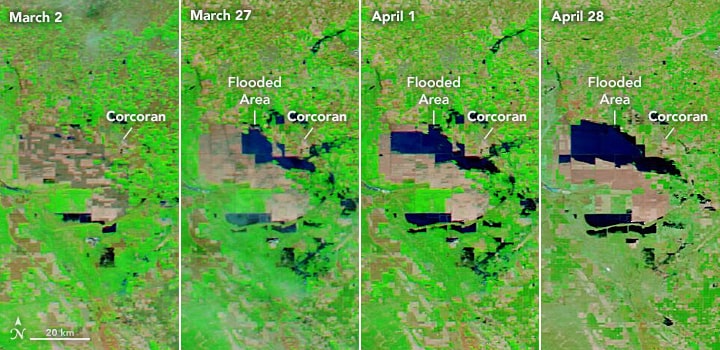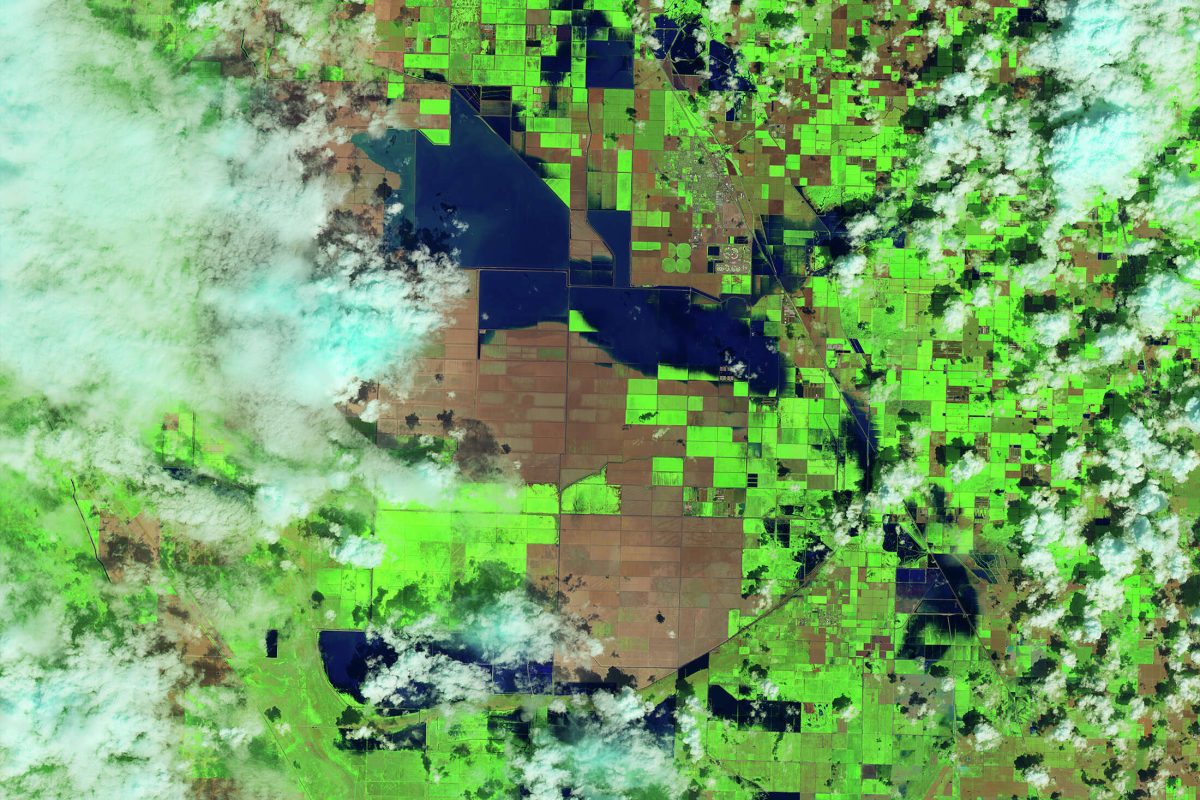
As the Sierra Nevada snowpack melts after one of the deepest seasons in recorded history, Tulare Lake quickly returns to life after the most recent Western Mega Drought had left it empty for years. Seen in the images captured by NASA’s Moderate Resolution Imaging Spectroradiometer (MODIS) on their Aqua Satellite, the lake has expanded at a rate of nearly 3,000 acre-feet per day since March 2nd.
The lake will continue to grow until it reaches peak size and volume expected in late July. Estimates predict the volume to range from 900,000 to 1,100,000 acre-feet, and surface area to range from 130,000 to 150,000 acres. For reference, San Francisco is only 30,000 acres in land size and Lake Tahoe is 122,000 acres in surface area. This means Tulare Lake will transform from an empty lakebed to five times the size of SF within five months, out-competing Lake Tahoe for surface area in the process.

Located in California’s San Joaquin valley, the Tulare Basin swells each spring with snowmelt from the neighboring Sierra Nevada Mountain Range. But thanks to a combination of severe drought and irrigation systems that have stemmed from the lake since the 1900s, what once was the largest lake west of the Mississippi has remained dry for years.
Then comes Winter ‘22-’23. Dumping over 700 inches of snow on resorts across the Sierra Nevadas, including two successive atmospheric rivers that struck the South-Central region of California, this Winter triggered a domino effect of drought relief.
From snowpack totaling 4x the average in April and 2x the average on May 1, to several California reservoirs recording higher than historical averages, to immense super blooms across the eastern Sierras, people and plants alike have rejoiced.
Complications have and will continue to arise, however, especially for the farm town of Corcoran which shares a 14.5-mile Levee-border with Tulare Lake. The city has experienced flood damage from the lake’s revival and has recently confirmed $17.2 million plans to raise the levee four feet higher to 192 feet above sea level, as part of Governor Newsom’s larger $290 million deal for flood mitigation across central California.





